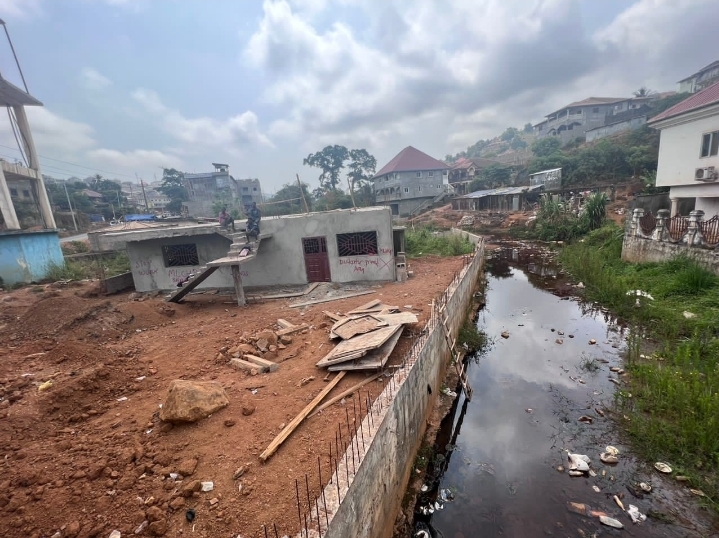The National Disaster Management Agency in collaboration with the Ministry of Environment and Climate Change, Ministry of Lands, Housing and Country Planning and National Protected Area Authority has embarked on a joint assessment of illegal constructions in waterways within the Western Area.
This exercise was triggered by the Director of Disaster Risk Reduction and Preparedness (DRR&P) Thomas Lebbie following several hazard identification and risk assessment activities that the DRR&P undertook in the Western Area.
The reports of the assessments were compiled, categorised and shared with relevant stakeholders within the environment sector for action. This method is akin to NDMA’s strategy to ensure an inclusive disaster risk governance system in Sierra Leone.
Responses from the various sector players indicated the setting up a joint assessment team to look into the reports of indiscriminate construction of illegal structures in waterways in the Western Area.
A team that comprised representatives from the Ministry of Environment and Climate Change, NDMA, Ministry of Lands, Housing and Country Planning and the National Protected Area Authority was set up to intervene and put a stop to such illegal constructions promptly.
During the visits, the Director of Disaster Risk Reduction and Preparedness, Thomas Lebbie, said the purpose of the joint assessment is to determine the vulnerability of communities and identify their hazard(s), and exposures – which include providing estimates of the number of people that would be affected in the event of a disaster, number of infrastructures that will be impacted or damaged, number of businesses that would be altered or cut off and damage to critical national infrastructures.
“The joint assessment will also focus on the root causes and evaluate the likelihood and consequences of an incident. That is why we are focusing on prevention and mitigation activities because it is less expensive to prevent and mitigate disasters than responding to disaster emergencies.” Lebbie noted
The team visited Beccles Street at Brookfields where a lady is developing a structure on a waterway that is at high risk and there is a likelihood of major flooding to occur within the surrounding that will lead to loss of lives, damage to property and community unrest which is also of high-security risk.
The team also undertook spot checks at the Regent Community, from which they observed ongoing illegal constructions along the right of ways and waterways, which are primarily responsible for the yearly inundation of floods on several houses at Jeremiah Street in Regent. In 2022, several families had to relocate for safety.
At Hastings Jui Channel, the team also made a stopover to assess some structures that are under construction to determine if there are risks of environmental hazards. The team concluded their joint assessment at Waterloo market, where a platform has been constructed and entirely blocked the main culvert.
Acting Director of Environmental Disasters at the Ministry of Environment and Climate Change, Lahai Keita said the exercise was important as it provides the right space for all state actors to have a clear understanding of how important it is for inter-institutional collaboration in carrying out their individual mandates.
The Deputy Director of Country Planning, Ministry of Lands, Housing and Country Planning Ing. Musa Koroma, during the visits, observed that most of those constructing the said structures do not possess authentic building permits and most of the areas were grabbed.
“Taking what we have seen today and the risks associated with most of these structures, demolition is highly eminent to prevent major incidents that will negatively impact lives and property,” he said.
The committee is expected to meet this week to develop a draft report of its findings and recommendations for the attention of other critical sector players and implementation.

